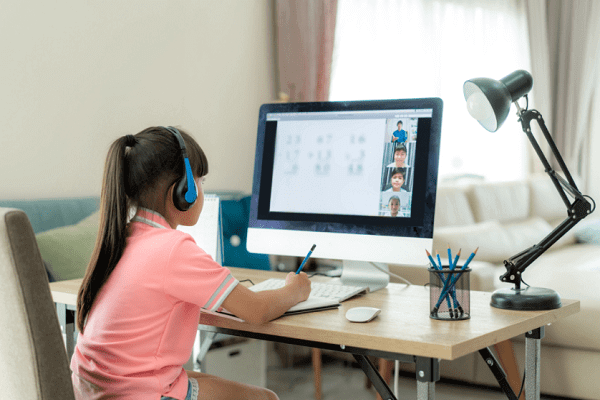Distance learning is one of the most remarkable ways technology is being (and has ever been) applied to education and learning. You mean I no longer have to sit in a stuffy classroom for hours? Awesome! However, with every new invention comes new problems. As awesome as distance learning seems, you still have to deal with the problems of how to eliminate distractions and create a learning environment that will allow you to actually learn.
The classroom was built for the sole purpose of learning, which makes any other activity there look out of place. Your room on the other hand was probably not built with learning in mind, so its an uphill task to create the right setting for learning there..
But it’s not an impossible task. In fact, using the tips below, you can create a distance learning environment that is as close to the real thing as possible without having to break the bank. Let’s take a look at these tips:
Contents
Establish a Dedicated Learning Space
Much like actual teaching only takes place in dedicated classrooms in a school, you need to create a dedicated learning space in your home. This space will serve as your distance learning space and will only ever be used for that. Therefore, you need to make sure this space is set up in a way to minimize distractions and make it easy for you to read and learn.
Optimize Your Space
Once you’ve identified the space you wish to use as your distance learning environment, the next step is to optimize it for learning. You can start with the lighting. Proper lighting is essential to study, so make sure you have your space properly lit up — preferably with natural light. Next, set up your table. Place all necessary items needed for studying within reach to reduce how often you need to stand up (which breaks your concentration).
Also read: Why You Should Use a Collage Maker Online
Use Mobile-friendly and Offline-enabled Tools
Since learning from home essentially means learning online, it is essential that you have internet-enabled devices that are properly configured. Your home Wi-Fi must be able to handle steady video connections. However, it is also a good idea to have devices that can continue to access downloaded videos and documents offline as this will enable you to keep studying even when you are not able to connect to the internet. Having a mobile device is also quite advisable if you are the type that can study on the go.
Use Both Synchronous and Asynchronous Modes of Learning
Synchronous refers to learning directly from a teacher while asynchronous refers to learning from resources such as textbooks, prerecorded presentations and so on. Synchronous learning continues to be important as you’ll need a constant reminder that there are other people involved in your learning experience while asynchronous gives you the chance to study ahead on your own. Together, both modes of learning will help you create a complete learning experience that will be no less beneficial than learning physically in a classroom.
Final Thoughts
Perhaps the whole world will soon cease to need the physical classroom. Or perhaps we will soon dump distance learning in the wastebasket of failed inventions. Till then, however, these few tips will help you create a balanced distance learning environment, for you or anyone that wishes to learn from you.


![13 Best Sites to Stream UFC Live Online for Free [2024] 13 Best Sites to Stream UFC Live Online for Free [2024]](https://appearworld.com/wp-content/uploads/2024/11/13-Best-Sites-to-Stream-UFC-Live-Online-for-Free-200x125.jpg)


